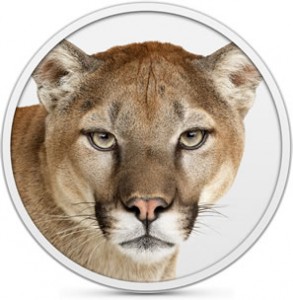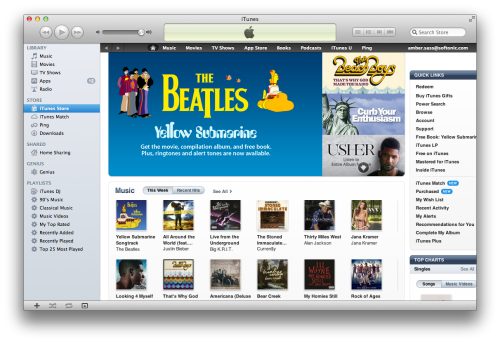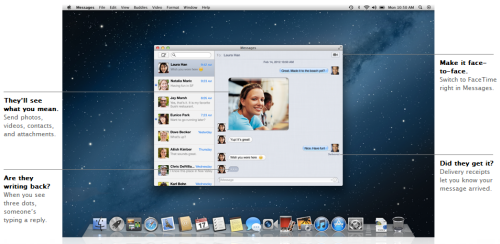 Apple is set to announce a slew of new hardware and software changes during the World Wide Developers Conference (WWDC) in San Francisco on Monday. One of the biggest highlights is going to be OS X Mountain Lion.
Apple is set to announce a slew of new hardware and software changes during the World Wide Developers Conference (WWDC) in San Francisco on Monday. One of the biggest highlights is going to be OS X Mountain Lion.
Developers have had access to a preview build of Mountain Lion for months, but Apple can still pull out some surprises at the last minute.
Here’s a list of the features I want to see in Mountain Lion.
Less bloated iTunes

iTunes catches grief for being a bloated program and not much has changed after all these years. With the Apple App Store, iTunes is a portal for all of your iOS devices and it is required for syncing and managing media, even though you can do that over Wi-Fi now. Being tied into iTunes wouldn’t be so bad if performance wasn’t so terrible.
iTunes takes ages to launch and clicking on different sections often gives me a brief “beach ball.” Try playing video within iTunes and watch it struggle to keep up. iTunes is still a good program for managing music, but there hasn’t been anything innovative with the user interface or how we browse music. That’s something I would like to see in the next version of iTunes.
Death of the Skeuomorph

A skeuomorph is defined as “an ornament or design on an object copied from a form of the object when made from another material or by other techniques.”
This has been a problem with OS X’s interface for a while, but has gotten even worse with OS X Lion. For example, OS X Lion’s address book resembles a leather bound address book that was popular before digital contacts management.
In the past, computers were something foreign and had to have some familiar cues for users to understand their interfaces. Nowadays, computers are so deeply ingrained in society that skeuomorphism is irrelevant. I do not need to see page animations or the leather stitching of the address book. I know what these applications do. Windows 8 has gotten rid of many of these skeuomorphs and I think it’s essential to leave them behind to create interfaces that are more intuitive.
Fixed Mission Control

OS X Lion introduced Mission Control, which blended both Exposé and Spaces. Unfortunately, it also completely broke both features. There are nagging inconsistencies within Mission Control that make it almost worthless. Why can I drag spaces around, but can’t drag applications from different spaces into other spaces? Why doesn’t Exposé in Mission Control expose the windows in every space? Why can’t I drag an application from one space to another space in a different monitor?
As far as I’m concerned, window management in OS X is broken. Windows 7 has more intuitive window management with Aero Peek, which shows thumbnail previews that help users focus on specific windows. In OS X, I often find myself looking for a lost Finder window that has disappeared behind a maximized app.
Kill Dashboard

Dashboard has not seen innovation in years and should be taken out of its misery. The only thing it’s good for is quickly looking at weather or pulling up sports scores. There are other applications that provide persistent information in the menu bar, which is much more useful as it isn’t hidden off in is own “space.”
Microsoft tried widgets in Windows Vista, but it was such a flop that it hid this feature deep in the Control Panel in Windows 7. No one uses them because they’re constantly hidden away behind windows.
Maybe widgets would be more useful when used with multiple monitors by having widgets pinned to the desktop of a secondary monitor as a heads up display. Even then, there’s not much utility to be found in widgets or Dashboard.
Fixed full screen mode with multiple monitors
Another thing that OS X Lion introduced and completely broke is full screen mode. Lion attempted to bring iOS-like design features into OS X. The idea is that apps run in full screen so you can four finger swipe between them like you can on the iPad. The problem is, users who have multiple monitors love to multitask, but what Lion’s implementation did is throw up a “shade” on the secondary monitor. Why not make use of that space and have one of the other applications be full screen on that monitor?
Frustrations with full screen extend to when playing video. Some videos will full screen and put the shade over the second monitor. This makes it extremely annoying when you want to continue a chat on one screen while watching a video on the other. While iOS is built for using one app at a time, a desktop OS is designed for users to use multiple applications. These are two conflicting paradigms and Apple shouldn’t have shoehorned mobile into its desktop OS.
Improved Mail client

While the Apple Mail client is serviceable, there’s much room for improvement. One of the big updates with Lion was the introduction of threaded messaging, which had been a feature of competing mail clients for a long time. There are applications with excellent Gmail integration like Sparrow Mail.
It would be nice to see Gmail features like priority inbox, labeling, and archiving messages. There’s flagging in the Mail app but there’s no way to adjust the color of each message, making it easier to prioritize certain message. Other mail clients also feature social network integration so that contact information and avatars are pulled in automatically, making it easier to visualize your mail.
One area where I know Mail will be getting improvement is notifications. Mountain Lion will introduce the Notification Center to handle notifications across all applications. There are applications like Growl that have been serving up notifications, but Notification Center seems like an all-around better solution for non-obtrusive notifications and notification management.
Natural language interaction
![]() With Siri becoming an integral part of Apple’s mobile strategy, it would be interesting if Apple began including natural language recognition in their applications. This does not necessarily mean that Siri should be integrated into Mountain Lion, but applications should know how to respond to typed natural language. For example, the Calendar app already knows when I type in “Dinner with Tom on Friday at 7pm” to create an event for Friday.
With Siri becoming an integral part of Apple’s mobile strategy, it would be interesting if Apple began including natural language recognition in their applications. This does not necessarily mean that Siri should be integrated into Mountain Lion, but applications should know how to respond to typed natural language. For example, the Calendar app already knows when I type in “Dinner with Tom on Friday at 7pm” to create an event for Friday.
There should be a command bar where the user just types in commands and has the operating system recognize what to do. Hit a keyboard shortcut to bring up the command bar and type. If you type in “Remind me to buy milk when I leave work,” it should create a reminder for you that’s synced directly to your iPhone, which will set up a reminder with a ‘geofence,’ detecting when you leave work.
I’m still not convinced that Siri will be useful on a desktop, but using natural language to communicate to Mountain Lion should be a top priority.
Support for multiple chat services

One of the most interesting features that Apple will be announcing in Mountain Lion is their complete re-imagining of iChat. Messages will take over and feature FaceTime and cross-device chat. iOS users will be able to chat with Mac users, forming an all-in-one chat solution for the desktop and mobile.
It would be nice to see Messages support other chat services like Google Talk, AIM, and Facebook Messenger. This is highly unlikely as Apple will want to create an integrated system with Messages, but a guy can dream, can’t he?
There are just some of the features I want to see fixed or upgraded in OS X Mountain Lion. Many of these probably won’t make it into Mountain Lion but they are certainly some issues that need to be addressed.
What would you like to see announced in Mountain Lion?
Let us know in the comments.

